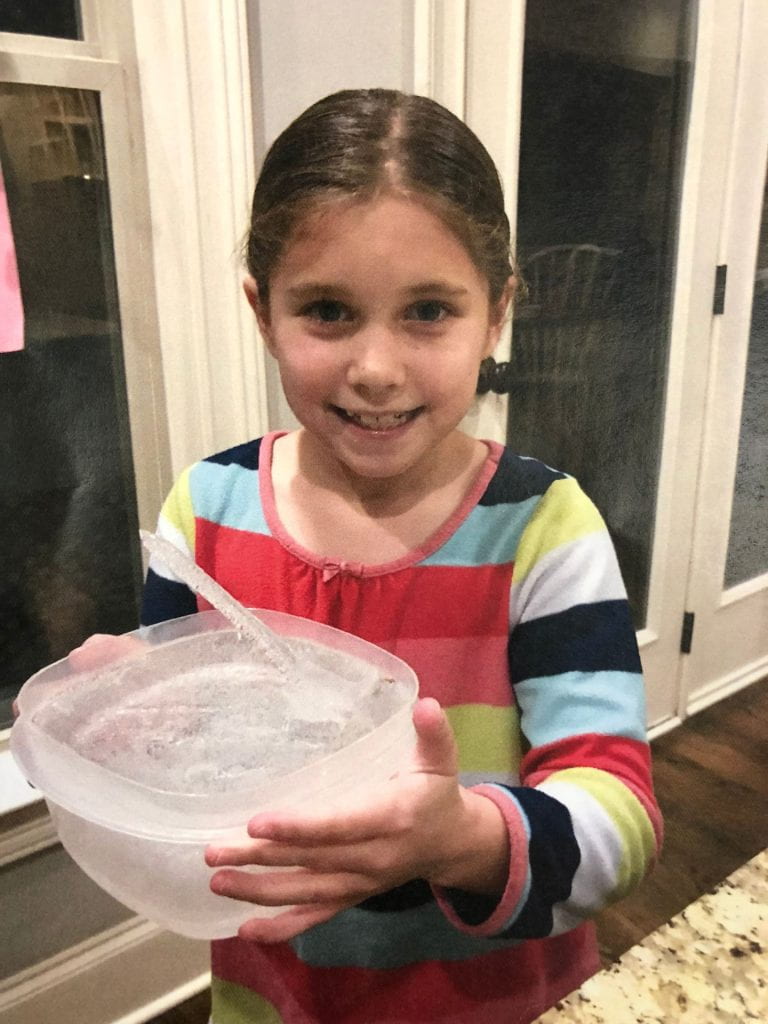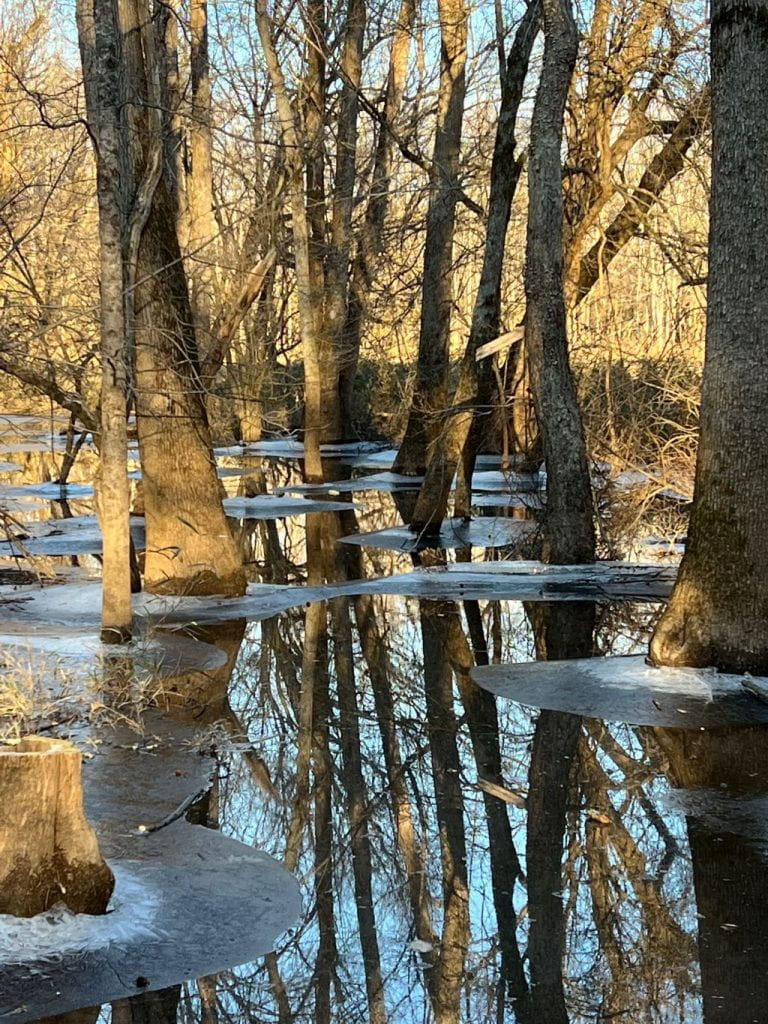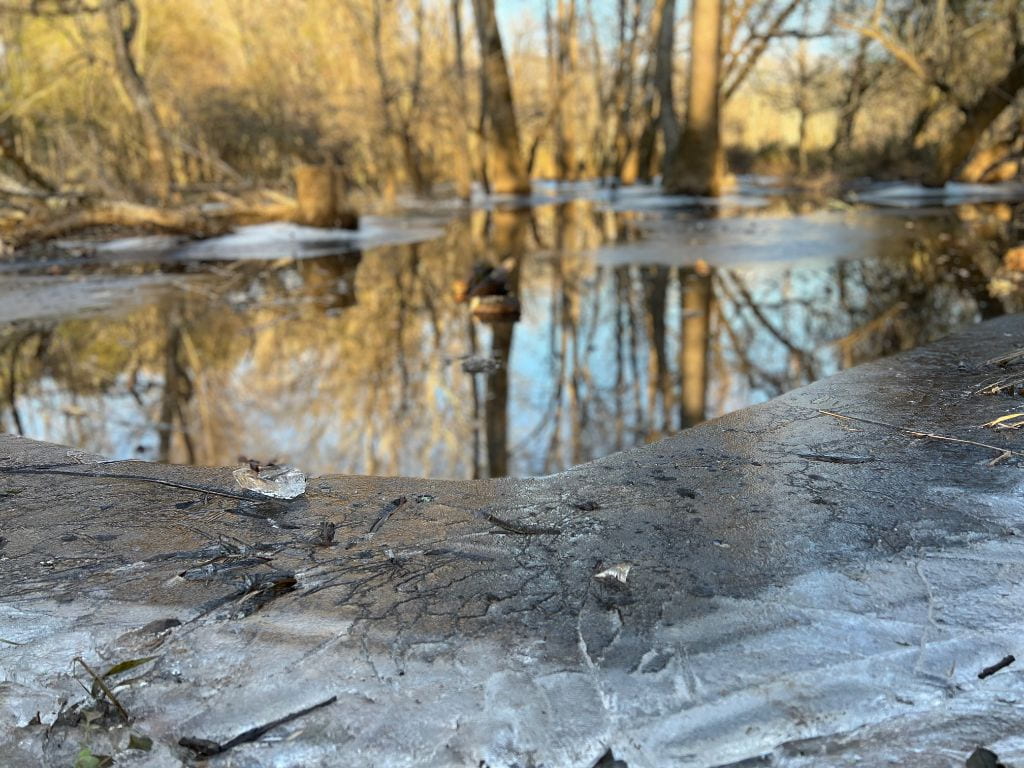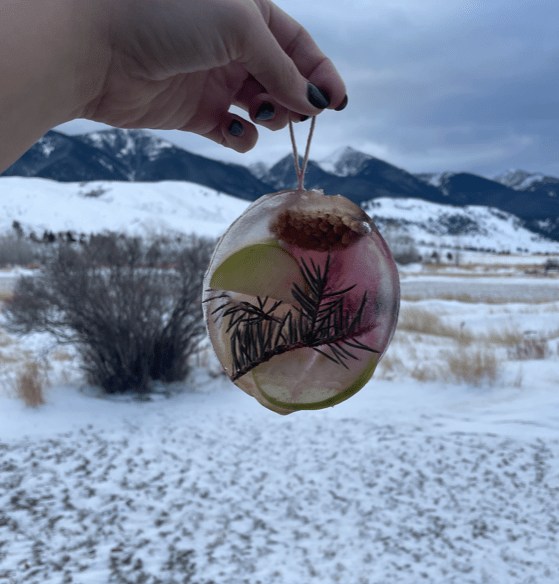A Study of Ice
Temperatures have dipped below freezing, and I saw ice for the first time on a recent Greenway walk. Since Atlanta rarely is that cold, I am sharing some photos from friends who live where they consistently see ice and snow.
Use water to teach the states of matter. Ice is the solid form of liquid water, produced by freezing.
Click here to view full screen.
Can you identify the object in this photo captured by my friend Ellen? Watch below to find out!

Click here to view full screen.
Click here for a lab about melting and freezing.
There are many simple investigations that children can perform to investigate how water changes from liquid to solid.
- Does water expand when it freezes? Fill a mason jar about halfway with water. Draw a line where the water stops. Place the jar in the freezer and test your hypothesis.
- Does hot or cold water freeze faster? Place a small glass of each temperature of water in your freezer. What do you observe? (Results may surprise you!)
- Mix salt into a cup of water until it is saturated. Will the water still freeze?
- Fill a Styrofoam cup halfway with water. Place it in the freezer. What happens to the cup when the water freezes? Apply what you learn to why potholes form on roadways.
- Take ice out of the freezer and place it in a bowl. What happens? How long does it take for the ice to melt? Will it melt faster if you sprinkle salt on the ice?
- Color ice cubes with food coloring. Drop one in a glass of vegetable oil. What happens? Click here for more information.
- Make slushies or ice pops (popsicles). There are many recipes online.
- This is a great opportunity to investigate insulation. Place an ice cube in a can, glass jar, and Styrofoam cup and cover each. What happens? Design your own investigation.
- When outside on a cold day, touch various materials and compare the temperature of each. Include metal (car and gutter), wood, concrete, plastic, soil, plant parts, and glass.
Click here for an instafreeze investigation from Steve Spangler.
Tinkergarten has fun ice projects too. Click here and here for ideas from this great organization. The following photo of an ice ornament was taken in Montana and shared by my friend, Susan. How fun it would be to decorate a winter tree with these!
How does an ice spike form? Click here to learn more.

Integrate social study concepts into your study of ice and learn about the Arctic.
Click here for a lab about icebergs. Click here to watch the Safeshare link.

Can bubbles freeze? Click here to learn more. Photo taken by my friend, Ellen.

Which sports use ice? Click here to view full screen.
Sports are based on physics. Watch the video below to learn more. Click here to view full screen.


